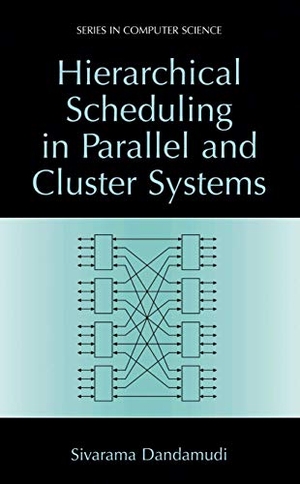
Sivarama Dandamudi
Hierarchical Scheduling in Parallel and Cluster Systems
- Springer US
- 2012
- Taschenbuch
- 280 Seiten
- ISBN 9781461349389
Multiple processor systems are an important class of parallel systems. Over the years, several architectures have been proposed to build such systems to satisfy the requirements of high performance computing. These architectures span a wide variety of system types. At the low end of the spectrum, we can build a small, shared-memory parallel system with tens of processors. These systems typically use a bus to interconnect the processors and memory. Such systems, for example, are becoming commonplace in high-performance graph ics workstations. These systems are called uniform memory access (UMA) multiprocessors because they provide uniform access of memory to all pro cessors. These systems provide a
Mehr
Weniger
zzgl. Versand
in Kürze